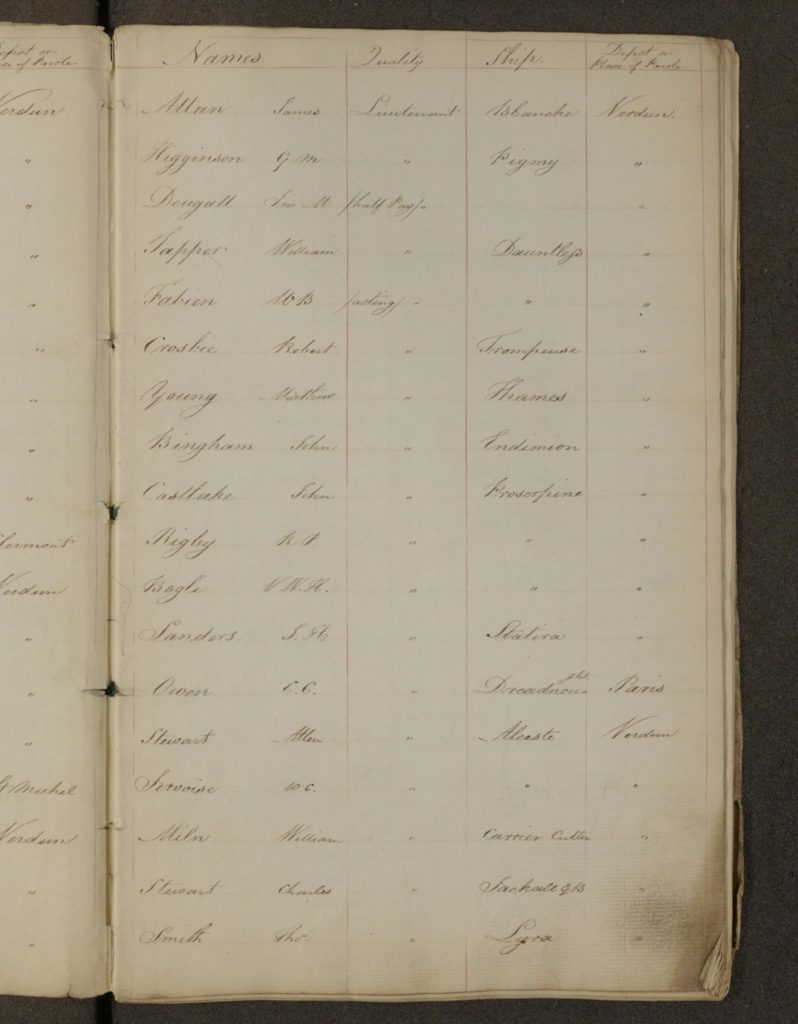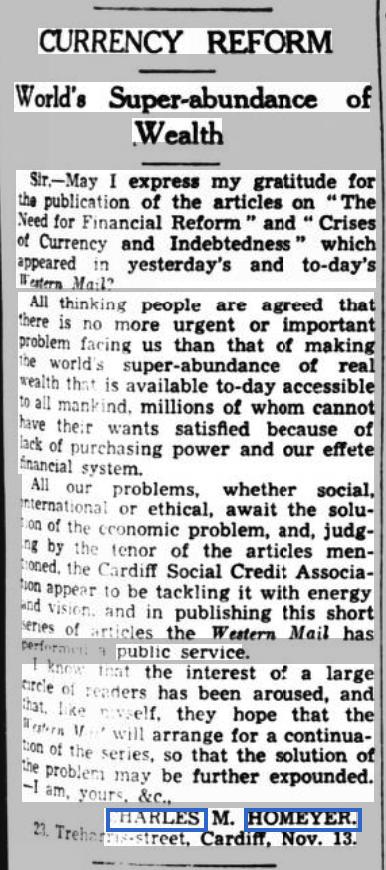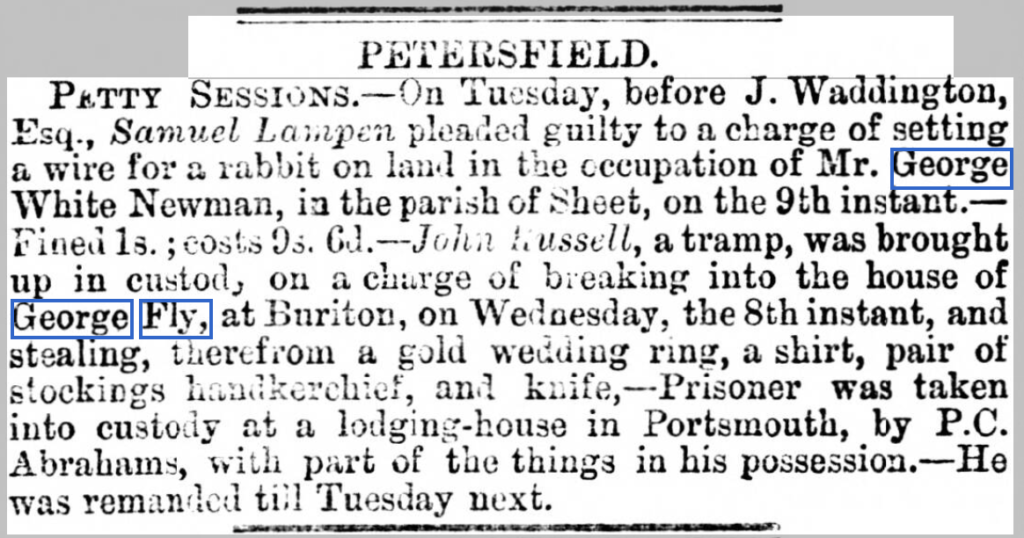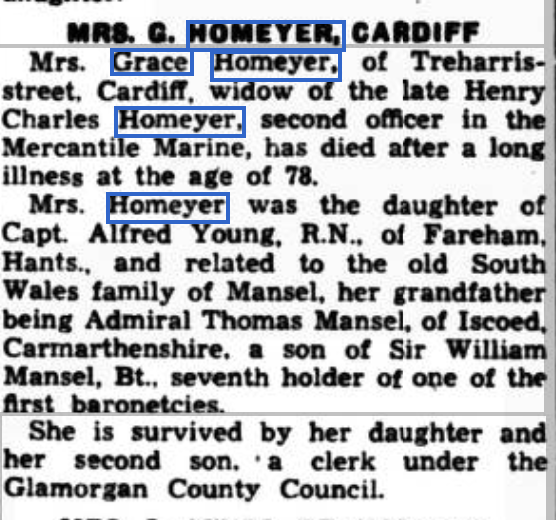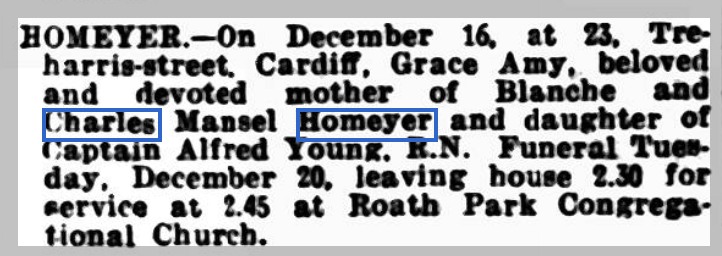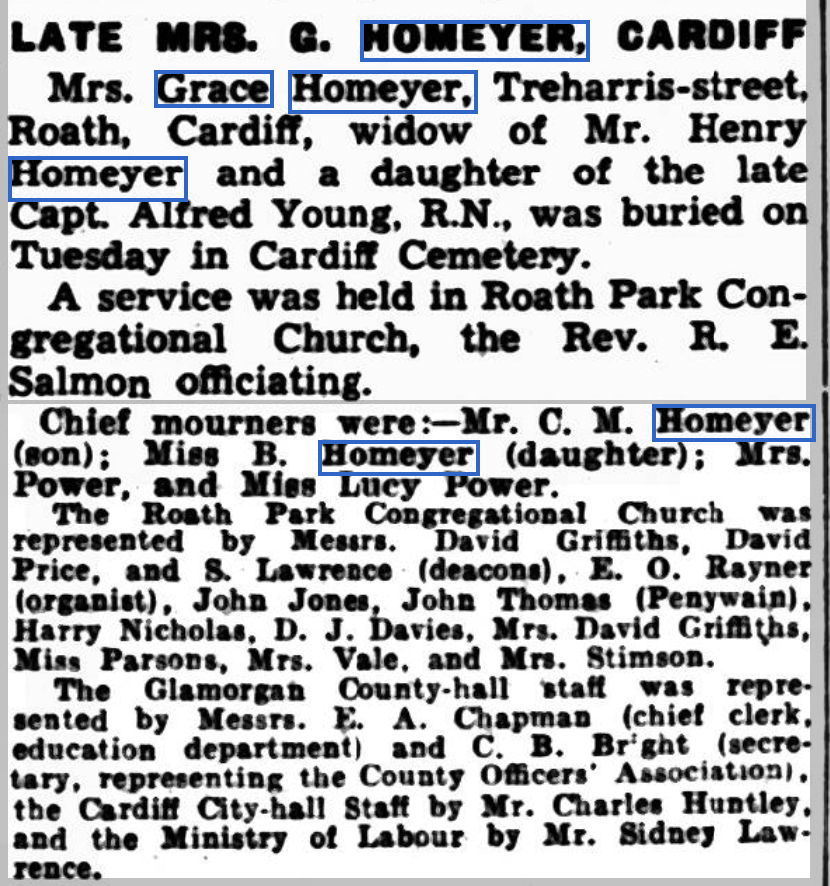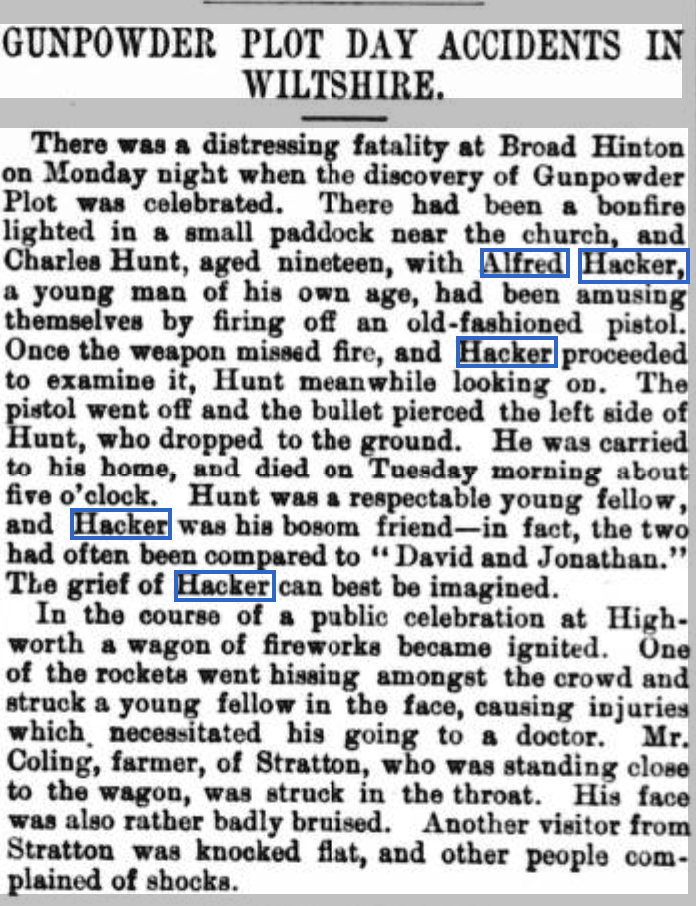Matthew Young was in the Royal Navy and on 20th October 1807, while in charge of a prize Indiaman, was captured by the enemy and taken to France. He was detained a prisoner until May 1814. His son Alfred was born in Verdun, in 1811.
Findmypast.co.uk. hold selected prisoners of war records from 1715-1945. These records are predominantly of British prisoners of war. These are selected digitised records from a variety of record collections held at The National Archives, including Foreign Office, Colonial Office, Admiralty and Air Force collections.
I knew they should include a record of Matthew Young who was a British Prisoner of War between 1807-1814. I found there was only one record for Matthew Young dating from this period so I paid a one off fee to download the record.
It showed that Matthew Young was a Lieutenant. I believe the book was compiled in 1811 during the Napoleonic Wars. He was from the ship Thames and the Depot or Place of Parole was Verdun. I’m not sure what this document is

